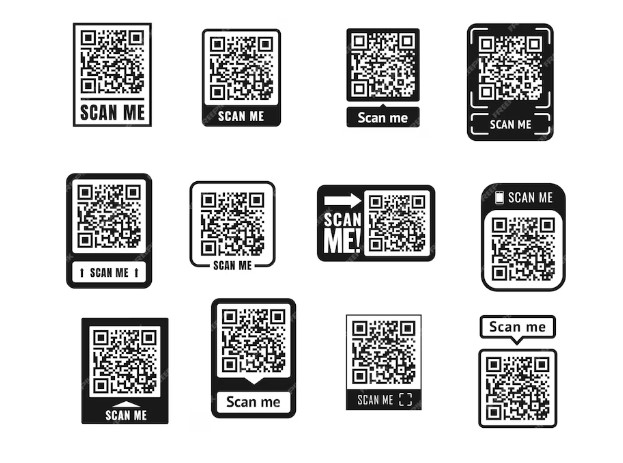Quick Response (QR) codes have revolutionized the way we interact with the world around us. These two-dimensional barcodes quickly and effortlessly bridge the gap between the physical and digital realms. We will explore how QR codes make digital connections more accessible, exciting, and efficient.
The Magic behind QR Codes
At its core, QR technology is a type of matrix barcode first designed for the automotive industry in Japan. It has expanded its reach to include many functions across various sectors. Here’s how it works:
- A QR code is generated using specialized software that encodes information into a visual, square-shaped pattern.
- Smartphones and other camera-equipped devices scan the pattern using a QR reader application.
- The application deciphers the pattern and executes the encoded action, such as opening a website or a contact card.
Thanks to this simple yet effective system, QR codes have become a versatile tool for digital connectivity.
Some Common Fields of Using QR Codes
QR codes, or Quick Response codes, are two-dimensional barcodes that store various information, such as website URLs, contact information, Wi-Fi network credentials, etc. They have become increasingly popular for their ease of use and versatility. Here are some ways in which QR codes are used to transform digital connections:
- Contactless Transactions:
QR codes are commonly used for contactless payments. Payment apps generate QR codes that store payment information, allowing users to make transactions by scanning the code with their smartphones.
2. Marketing and Advertising:
Businesses use QR codes in marketing materials to provide quick access to product information, promotions, or exclusive content. When scanning the code, users are directed to a website or a specific landing page.
3. Networking and Social Media:
QR codes are used for quick and easy networking. Business cards, conference badges, or profiles can include QR codes that, when scanned, instantly connect users on professional networking platforms or social media.
4. Authentication and Security:
QR codes are utilized in two-factor authentication and security processes. Users may scan a QR code to confirm their identity or access secure information.
5. Product Packaging:
Brands use QR codes on product packaging to provide consumers with additional information, such as instructions, videos, or user manuals. This enhances the user experience and engagement.
6. Event Management:
QR codes are widely used for ticketing and check-in purposes. Attendees can store their event tickets or pass them as QR codes on their smartphones.
7. Education and Training:
QR codes are employed in educational materials to link to supplementary resources, videos, or interactive content. This enhances the learning experience by providing easy access to relevant information.
Transforming Digital Connections
- Marketing And Advertising:
QR codes have become a staple for modern marketing campaigns. They offer a seamless way to connect consumers with online resources, such as:
- Product details
- Special offers
- Interactive campaigns
- Event information
By simply scanning a QR code, customers can engage with brands on a deeper level without manually entering URLs or navigating to specific web pages.
2. Payments And Transactions:
One of the most significant advances that QR codes have enabled is in the field of digital payments. For instance:
| Method | Description | Example Providers |
| Mobile Wallets | Users can pay for goods and services by scanning a QR code which links to their digital wallet. | Apple Pay, Google Wallet, Alipay |
| Point-of-Sale | Merchants can receive payments by having customers scan codes directly at the register. | Square, Paytm, bKash, Nagad,Rocket |
3. Social Connections
If you are looking to add a new contact on social media, share your profile, or join a group, QR codes make this as easy as a camera snap. They enhance social networking by creating instantaneous connections.
Best Practices for Using QR Codes
For individuals and businesses looking to make the most out of QR technology, here are some best practices to follow:
- Visibility matters: Place your QR codes where they’re easily noticeable and accessible for scanning.
- Optimize for mobile: Ensure the destination content is mobile-friendly, providing a seamless user experience.
- Track and analyze: Use traceable QR codes to gauge user engagement and measure campaign success.
- Keep it fresh: Regularly update the content behind the QR codes to keep users interested and coming back for more.
By adhering to these strategies, you can powerfully leverage QR codes to connect with your audience.
The Future of QR Codes
As technology advances, the potential applications for QR codes are boundless. From augmented reality experiences to IoT (Internet of Things) connectivity, QR codes will remain a cornerstone of digital connection. Their ease of use and widespread adoption make them an indispensable tool for interactive communication in our increasingly connected world.
If “QR Magic” is a specific product or service introduced after my last update, I recommend checking the official website or relevant sources for the latest and most accurate information about its features and applications.



